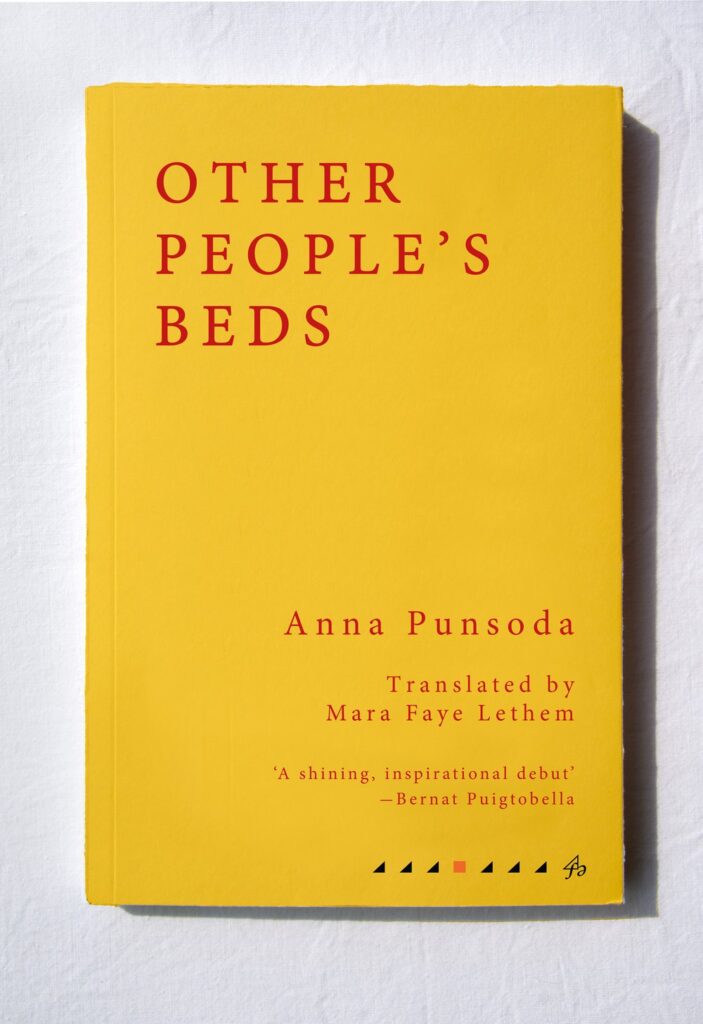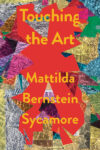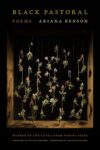
[Fum d’Estampa Press; 2022]
Tr. from the Catalan by Mara Faye Lethem
Years ago, when I taught creative writing at a university in the Midwest, I debated whether to assign a short story about a young woman who engages in covert sexual meetings with her father in his car on the roof of a parking garage. I knew the frank imagery of incest, the charged dialogue, and the consciousness we were to inhabit in that story would surely be difficult to discuss. On one hand, it is seldom productive for readers to relive trauma on the page, all the while wading through vivid descriptions and dense literary prose. On the other hand, I believed, and still do, that it is useful for writers who are going to be excavating and examining trauma in their work to read stories that do so in a nuanced and intentional way. (In the end, I distributed copies of the story—“You Drive,” by Christine Schutt—but made it an optional reading.)
Nowadays, I view the process of reading difficult work as an act of reconnaissance: scoping out different containers into which we can imagine pouring our otherwise formless and messy thoughts, memories, and observations. For that reason, I became interested in journalist and essayist Anna Punsoda’s first novel, Other People’s Beds, translated from the Catalan by Mara Faye Lethem, which is in many ways a refreshing rejoinder to the stories about trauma and sexuality that I read and taught in graduate school.
What struck me about Punsoda’s book was its initial insistence on telling rather than showing: It is composed of a long, lucid monologue delivered by a woman named Claustre to a waitress in Lleida, Spain. Choosing her words carefully, Claustre recounts episodes from her childhood, teenage years, and twenties. These episodes are divided into twenty chronological chapters. Bookending the twenty chapters are two scenes from the present, and in the middle of the one hundred-page book is an interlude in which the waitress responds to Claustre’s story.
The ten chapters preceding the interlude are loosely organized around Claustre’s experiences in “other people’s beds”—the cot in the school infirmary where she preferred to spend recess, her mother’s bed where she slept until age thirteen, and the bed of a male relative named Vicenç, who sexually abused her. Through Claustre’s narration, we see a mind at work trying to make sense of her early years. What’s more, we see that she has chosen a particular way—out of an infinite number of ways—to present the information.
By foregrounding the fact that Claustre is telling her own story, rather than fully immersing the reader in the traumatic events being described, Punsoda extends to us a kind of narrative guardrail, a hand to hold. The framing story in particular anchors readers to a scene they can fall back on. As a counterpoint to Vicenç, we get dialogue between Claustre and the waitress in Lleida, who affirms Claustre’s memories and commiserates with her. This happens, for example, when Claustre snaps out of her monologue during the book’s interlude and begins to capitulate, noting that, despite everything else, her family had paid for her attend a good school. “To fix what they’d broken in you,” the waitress points out, refusing to let Claustre blame herself.
Punsoda’s strategy also lends dignity and depth to her characters. Take, for instance, the novel’s seventh chapter, which centers on the hospital bed where Claustre’s father spends his dying days. In this chapter, Claustre, her mother, her aunt, and a jazz club entertainer—presumably a mistress—tend to Claustre’s father, after he enters a hepatic coma due to decades of heavy drinking. The hospital bed serves as a gathering place, where family members speak about the patient as if he were absent, or in the abstract, like a sculpture in a museum. The patient is horizontal, inert. His visitors are vertical, mobile. “He always does the most hurtful things,” the jazz club singer says. “There are good things about him too,” Claustre says in her father’s defense. Besides a quick description of the father’s “yellow face and scabby lips” at the beginning of the chapter, Punsoda does not linger on the spectacle of death. Instead, we hear about the dying man through the women who know him best—the women he lies to, terrorizes, neglects, and who, in the end, come to care for him. His sorry state is told and not shown.
In much the same way, the sexual abuse that forms the backbone of the novel is told and not shown. Readers are privy to long accounts of the events and their circumstances, but almost no descriptions of the abuse exist. This style of narration assumes a level of understanding on the reader’s part: The abuse does not need to be spelled out because, like the waitress in Lleida, the reader is invited into the story to commiserate, not to judge, doubt, or demand evidence of wrongdoing.
The ten chapters following the book’s interlude deal with bowel movements, specifically those induced by the laxatives Claustre takes in her twenties in order to purge her meals. The drastic formal shift that occurs at the midpoint of the book lends the novel an infallible sense of order. From cause to effect, sexual abuse to eating disorder, we cross a conceptual boundary on the book’s fiftieth page. When the book closes, the two halves meet face-to-face, and this perfectly symmetrical arrangement reflects the delicately constructed nature of Claustre’s self-image.
In the novel’s second half, there is quite a bit of showing in lieu of telling, as if feces were the perfect objective correlative to Claustre’s earlier years. We get graphic depictions of Claustre trapped in her bedroom or out on the street, shitting in her underwear or—somehow worse—into a cardboard box she finds in her childhood closet during her twentieth birthday party:
There, squatting in the dark over a shoe box, with laughter and voices in the background still toasting my health and the great future ahead of me, I entered another dimension. Because when the smelly paste stopped, water started coming out and even after that I was still excreting. My entire body gave every sign of emptying, my entire self struggled to void itself, I was even making the belligerent sounds of excretion, but nothing was coming out, there was nothing that could come out. I howled hysterically and involuntarily.
It is perhaps surprising that Claustre would spare her dying father the description of his damaged and malfunctioning body and, soon after, tell the waitress an utterly humiliating story about herself in such spectacular detail, though this reads to me like a deliberate, rhetorical choice on Punsoda’s part. The dramatic action that accompanies Claustre’s involuntary bowel movements aptly highlights the absence of such drama in the book’s first half. I get the sense that while Claustre might have a carefully calibrated way of recounting the story of her childhood, the abject and unruly story of her twenties is one she enjoys telling. It is, oddly enough, her way of reclaiming space and reaffirming her existence in the wake of early opposition. In her words, “You can shit in all sorts of places, keep hysteric watch over every inch around you, flagellate yourself with vomit and sex, and still ooze a primitive desire for life.”
Sentences like these that showcase Other People’s Beds’ self-affirming style remained with me—walked alongside me—as I made my way home from the coffee shop where I was able to finish the novel, which read like a long short story, in one sitting. In place of images of trauma revisited, I’m grateful to have been given Claustre’s wit, her unexpected turns of phrase, her potent omissions, and her evocative innuendos, which served as reliable guideposts in otherwise boundless and treacherous territory.
Jenny Wu reviews art and books, writes fiction, and occasionally curates. Her work can be found in BOMB, the Brooklyn Rail, and other venues.
This post may contain affiliate links.







